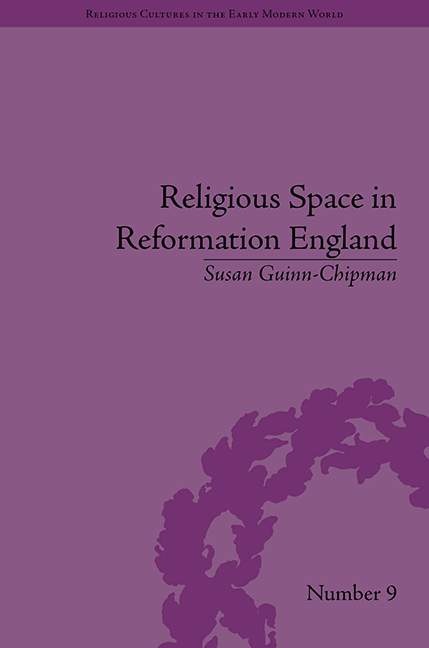Book contents
- Frontmatter
- CONTENTS
- Acknowledgements
- List of Figures
- Introduction
- 1 Dissolution and Adaptation: Religious Space in Henrician England
- 2 Radicalization and Response: Religious Space in Late Henrician and Edwardian England
- 3 Reframing the Parish Church in Marian and Elizabethan England: Cultural Adaptation in the Later Sixteenth Century
- 4 Contesting Religious Space: Alteration and Reaction in Stuart England
- Epilogue: The Persistence of Memory in Early Modern England: Mapping the Past
- Notes
- Works Cited
- Index
1 - Dissolution and Adaptation: Religious Space in Henrician England
- Frontmatter
- CONTENTS
- Acknowledgements
- List of Figures
- Introduction
- 1 Dissolution and Adaptation: Religious Space in Henrician England
- 2 Radicalization and Response: Religious Space in Late Henrician and Edwardian England
- 3 Reframing the Parish Church in Marian and Elizabethan England: Cultural Adaptation in the Later Sixteenth Century
- 4 Contesting Religious Space: Alteration and Reaction in Stuart England
- Epilogue: The Persistence of Memory in Early Modern England: Mapping the Past
- Notes
- Works Cited
- Index
Summary
In June of 1539, while drinking in the tavern of John Eliot, Nicolas Baland challenged the legitimacy of Henry VIII's supremacy over church matters. The former monk of the recently surrendered Hinton Priory had been heard to say that he knew in his heart that the Pope in Rome was the ‘supreme hed under god’ of the Church of England and that he would die in that opinion. Fellow monks and royal commissioner Sir Walter Hungerford alike noted that Baland was out of his mind. Baland, however, was not alone in questioning the Crown's supremacy, which had been enacted by Parliament in November 1534, declaring the King's authority to ‘refourme & redresse all errours heresyes & abuses’ of the Church. Responses among English men and women to the Royal Supremacy as well as to the dissolution of the monasteries and suppression of shrines that followed in its wake varied widely, from the overt militant resistance of the north to acquiescence and collaboration more broadly. Between these responses, clergy and laity challenged the dissolutions, circumventing and contesting – resisting at a more cautious level – royal authority.
The focus of this chapter rests with a range of resistant activity to the Henrician monastic dissolutions and the suppression of shrines. It outlines key elements in patterns of cultural adaptation, variations upon which will be seen in later periods.
- Type
- Chapter
- Information
- Religious Space in Reformation EnglandContesting the Past, pp. 9 - 40Publisher: Pickering & ChattoFirst published in: 2014



